Braveheart
8 /10 1 Votes
78% Rotten Tomatoes 68% Metacritic Genre Action, Biography, Drama Duration Country United States | 8.4/10 IMDb 3.5/4 Roger Ebert Language English | |||||||||||||||||||||||||||||||||
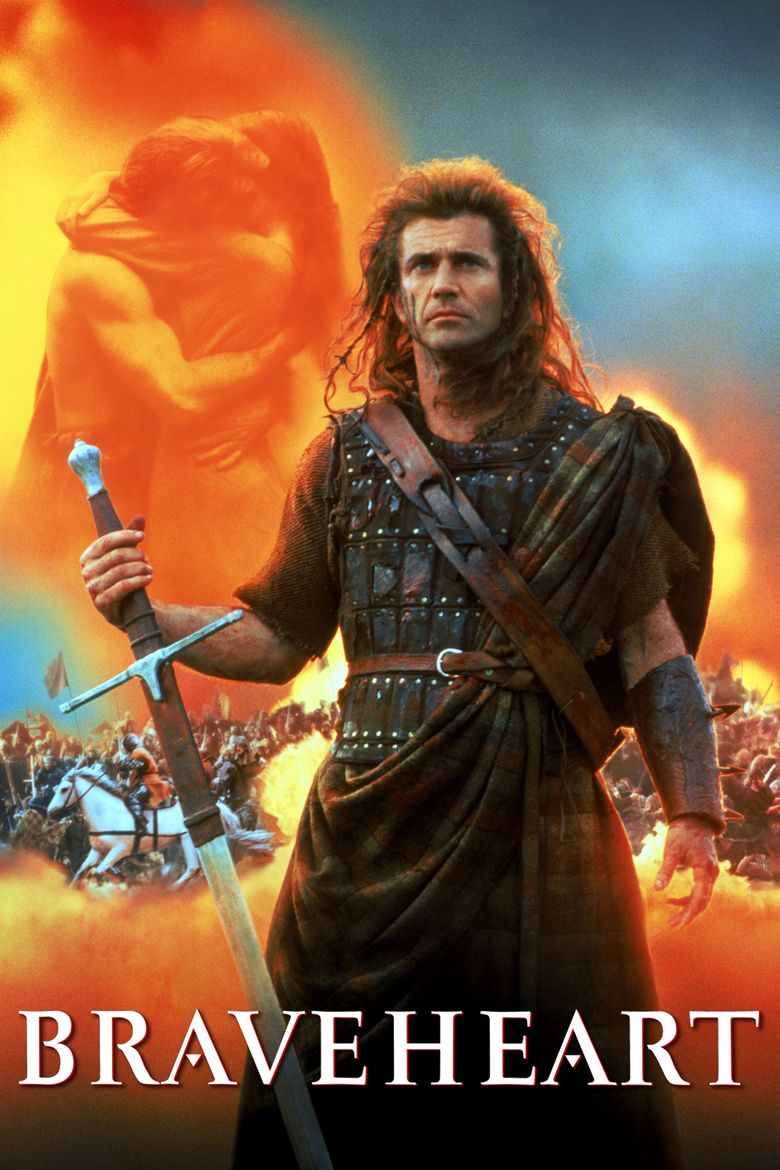 | ||||||||||||||||||||||||||||||||||
Release date May 24, 1995 (1995-05-24) Cast (William Wallace), (Murron MacClannough), (Princess Isabelle), (King Edward), (Robert the Bruce), (Hamish Campbell) Similar movies Dallas Buyers Club , Goodfellas , The Wolf of Wall Street , Steve Jobs , Unbroken , Memento Tagline Every man dies. Not every man truly lives. | ||||||||||||||||||||||||||||||||||
braveheart 1995 official trailer 1080p
Braveheart is a 1995 American epic war film directed by and starring Mel Gibson. Gibson portrays William Wallace, a late 13th-century Scottish warrior who led the Scots in the First War of Scottish Independence against King Edward I of England. The story is inspired by Blind Harry's epic poem The Actes and Deidis of the Illustre and Vallyeant Campioun Schir William Wallace and was adapted for the screen by Randall Wallace.
Contents
- braveheart 1995 official trailer 1080p
- Braveheart behind the scenes preparing for battle 1995 mel gibson movie hd
- Plot
- Production
- Soundtrack
- Box office
- Reviews
- Effect on tourism
- Awards and honors
- Cultural effects
- Wallace Monument
- Historical inaccuracy
- Jus primae noctis
- Occupation and independence
- Portrayal of William Wallace
- Portrayal of Isabella of France
- Portrayal of Robert the Bruce
- Portrayal of Longshanks and Prince Edward
- Wallaces military campaign
- Accusations of Anglophobia
- Braveheart song
- References

The film was nominated for ten Academy Awards at the 68th Academy Awards and won five: Best Picture, Best Director, Best Cinematography, Best Makeup, and Best Sound Editing.
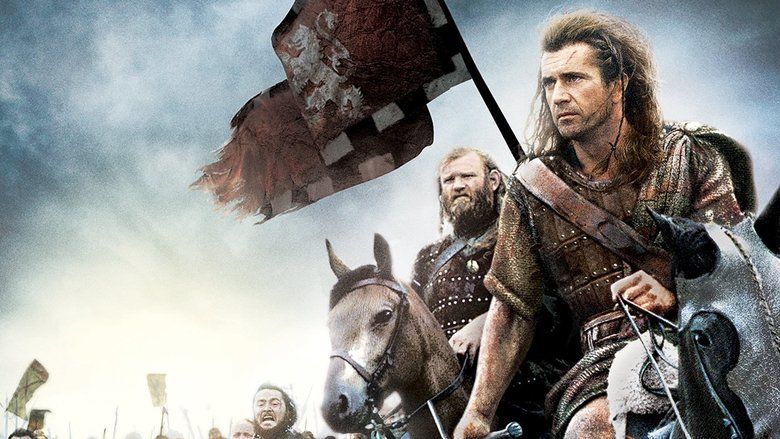
Braveheart behind the scenes preparing for battle 1995 mel gibson movie hd
Plot

In 1280, King Edward "Longshanks" invades and conquers Scotland following the death of Alexander III of Scotland, who left no heir to the throne. Young William Wallace witnesses Longshanks' treachery, survives the deaths of his father and brother, and is taken abroad on a pilgrimage throughout Europe by his paternal Uncle Argyle, where he is educated. Years later, Longshanks grants his noblemen land and privileges in Scotland, including Prima Nocte. Meanwhile, a grown Wallace returns to Scotland and falls in love with his childhood friend Murron MacClannough, and the two marry in secret. Wallace rescues Murron from being raped by English soldiers, but as she fights off their second attempt, Murron is captured and publicly executed. In retribution, Wallace leads his clan to slaughter the English garrison in his hometown and send the occupying garrison at Lanark back to England.

Longshanks orders his son Prince Edward to stop Wallace by any means necessary. Wallace rebels against the English, and as his legend spreads, hundreds of Scots from the surrounding clans join him. Wallace leads his army to victory at the Battle of Stirling Bridge and then destroys the city of York, killing Longshanks' nephew and sending his severed head to the king. Wallace seeks the assistance of Robert the Bruce, the son of nobleman Robert the Elder and a contender for the Scottish crown. Robert is dominated by his father, who wishes to secure the throne for his son by submitting to the English. Worried by the threat of the rebellion, Longshanks sends his son's wife Isabella of France to try to negotiate with Wallace. After meeting him in person, Isabella becomes enamored of Wallace.

Warned of the coming invasion by Isabella, Wallace implores the Scottish nobility to take immediate action to counter the threat and take back the country. Leading the English army himself, Longshanks confronts the Scots at Falkirk where noblemen Lochlan and Mornay, having been bribed by Longshanks, betray Wallace, causing the Scots to lose the battle. As Wallace charges toward the departing Longshanks on horseback, he is intercepted by one of the king's lancers, who turns out to be Robert the Bruce. Remorseful, he gets Wallace to safety before the English can capture him. Wallace kills Lochlan and Mornay for their betrayal, and wages a guerrilla war against the English for the next seven years, assisted by Isabella, with whom he eventually has an affair. Robert sets up a meeting with Wallace in Edinburgh, but Robert's father has conspired with other nobles to capture and hand over Wallace to the English. Learning of his treachery, Robert disowns his father. Isabella exacts revenge on the now terminally ill Longshanks by telling him that his bloodline will be destroyed upon his death as she is now pregnant with Wallace's child.
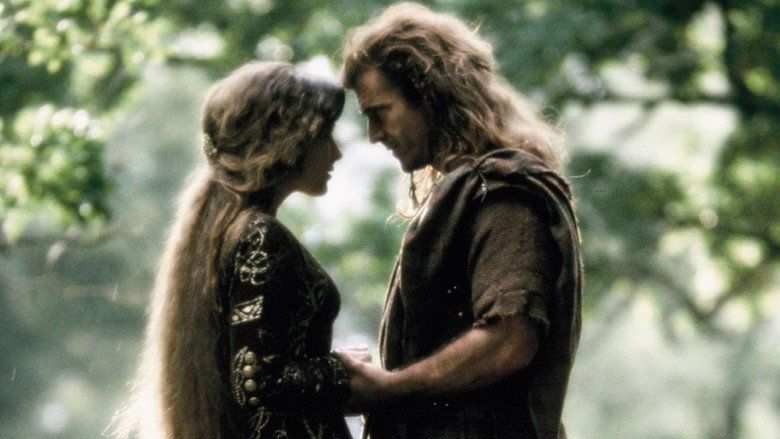
In London, Wallace is brought before an English magistrate, tried for high treason, and condemned to public torture and beheading. Even whilst being hanged, drawn and quartered, Wallace refuses to submit to the king. As cries for mercy come from the watching crowd deeply moved by the Scotsman's valor, the magistrate offers him one final chance, asking him only to utter the word, "Mercy", and be granted a quick death. Wallace instead shouts, "Freedom!", and the judge orders his death. Moments before being decapitated, Wallace sees a vision of Murron in the crowd, smiling at him.
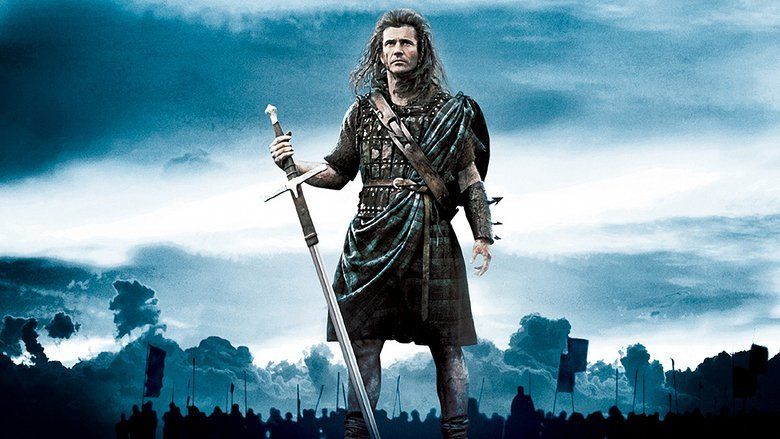
In 1314, Robert, now Scotland's king, leads a Scottish army before a ceremonial line of English troops on the fields of Bannockburn, where he is to formally accept English rule. As he begins to ride toward the English, he stops and invokes Wallace's memory, imploring his men to fight with him as they did with Wallace. Robert then leads his army into battle against the stunned English, winning the Scots their freedom.
Production
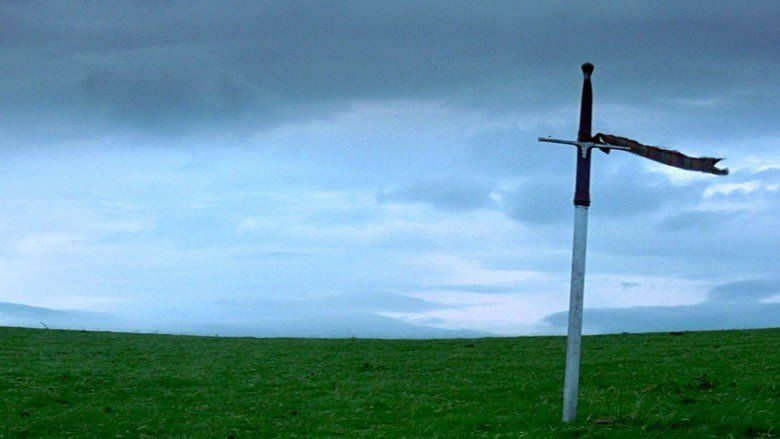
Gibson's production company, Icon Productions, had difficulty raising enough money even if he were to star in the film. Warner Bros. was willing to fund the project on the condition that Gibson sign for another Lethal Weapon sequel, which he refused. Paramount Pictures only agreed to American and Canadian distribution of Braveheart after 20th Century Fox partnered for international rights. The production budget has been estimated by IMDb at US$72 million.
While the crew spent six weeks shooting on location in Scotland, the major battle scenes were shot in Ireland using members of the Irish Army Reserve as extras. To lower costs, Gibson had the same extras, up to 1,600 in some scenes, portray both armies. The reservists had been given permission to grow beards and swapped their military uniforms for medieval garb.
Braveheart was shot in the anamorphic format with Panavision C- and E-Series lenses.
Gibson toned down the film's battle scenes to avoid an NC-17 rating from the MPAA; the final version was rated R for "brutal medieval warfare".
Soundtrack
The score was composed and conducted by James Horner and performed by the London Symphony Orchestra. It is Horner's second of three collaborations with Mel Gibson as director. The score has gone on to be one of the most commercially successful soundtracks of all time. It received considerable acclaim from film critics and audiences and was nominated for a number of awards, including the Academy Award, Saturn Award, BAFTA Award, and Golden Globe Award.
Box office
On its opening weekend, Braveheart grossed $9,938,276 in the United States and $75.6 million in its box office run in the U.S. and Canada. Worldwide, the film grossed $210,409,945 and was the thirteenth highest-grossing film of 1995.
Reviews
Braveheart met with generally positive reviews. Review aggregator Rotten Tomatoes gave the film a score of 78% with an average score of 7.2/10. In his review, Roger Ebert gave the film 3.5 stars out of four, writing, "An action epic with the spirit of the Hollywood swordplay classics and the grungy ferocity of The Road Warrior."
The film's depiction of the Battle of Stirling Bridge was listed by CNN as one of the best battles in cinema history.
In a 2005 poll by British film magazine Empire, Braveheart was No. 1 on their list of "The Top 10 Worst Pictures to Win Best Picture Oscar". Ironically, Empire Magazine's readers also voted Braveheart the best film of 1995.
Effect on tourism
The European premiere was on September 3, 1995 in Stirling.
In 1996, the year after the film was released, the annual three-day "Braveheart Conference" at Stirling Castle attracted fans of Braveheart, increasing the conference's attendance to 167,000 from 66,000 in the previous year. In the following year, research on visitors to the Stirling area indicated that 55% of the visitors had seen Braveheart. Of visitors from outside Scotland, 15% of those who saw Braveheart said it influenced their decision to visit the country. Of all visitors who saw Braveheart, 39% said the film influenced in part their decision to visit Stirling, and 19% said the film was one of the main reasons for their visit. In the same year, a tourism report said that the "Braveheart effect" earned Scotland ₤7 million to ₤15 million in tourist revenue, and the report led to various national organizations encouraging international film productions to take place in Scotland.
The film generated huge interest in Scotland and in Scottish history, not only around the world, but also in Scotland itself. Fans came from all over the world to see the places in Scotland where William Wallace fought, also to the places in Scotland and Ireland used as locations in the film. At a Braveheart Convention in 1997, held in Stirling the day after the Scottish Devolution vote and attended by 200 delegates from around the world, Braveheart author Randall Wallace, Seoras Wallace of the Wallace Clan, Scottish historian David Ross and Bláithín FitzGerald from Ireland gave lectures on various aspects of the film. Several of the actors also attended including James Robinson (Young William), Andrew Weir (Young Hamish), Julie Austin (the young bride) and Mhairi Calvey (Young Murron).
Awards and honors
Braveheart was nominated for many awards during the 1995 Oscar season, though it was not viewed by many as a major contender such as Apollo 13, Il Postino: The Postman, Leaving Las Vegas, Sense and Sensibility, and The Usual Suspects. It wasn't until after the film won the Golden Globe Award for Best Director at the 53rd Golden Globe Awards that it was viewed as a serious Oscar contender. When the nominations were announced for the 68th Academy Awards, Braveheart received ten Academy Award nominations, and a month later, won five. In 2010, the Independent Film & Television Alliance selected the film as one of the 30 Most Significant Independent Films of the last 30 years
Cultural effects
Lin Anderson, author of Braveheart: From Hollywood To Holyrood, credits the film with playing a significant role in affecting the Scottish political landscape in the mid to late 1990s.
Wallace Monument
In 1997, a 12-ton sandstone statue depicting Mel Gibson as William Wallace in Braveheart was placed in the car park of the Wallace Monument near Stirling, Scotland. The statue, which was the work of Tom Church, a monumental mason from Brechin, included the word "Braveheart" on Wallace's shield. The installation became the cause of much controversy; one local resident stated that it was wrong to "desecrate the main memorial to Wallace with a lump of crap". In 1998, someone wielding a hammer vandalized the statue's face. After repairs were made, the statue was encased in a cage every night to prevent further vandalism. This only incited more calls for the statue to be removed, as it then appeared that the Gibson/Wallace figure was imprisoned. The statue was described as "among the most loathed pieces of public art in Scotland". In 2008, the statue was returned to its sculptor to make room for a new visitor centre being built at the foot of the Wallace Monument.
Historical inaccuracy
Randall Wallace, who wrote the screenplay, has acknowledged Blind Harry's 15th century epic poem The Acts and Deeds of Sir William Wallace, Knight of Elderslie as a major inspiration for the film. In defending his script, Randall Wallace has said, "Is Blind Harry true? I don't know. I know that it spoke to my heart and that's what matters to me, that it spoke to my heart." Blind Harry's poem is now not regarded as historically accurate, and although some incidents in the film that are not historically accurate are taken from Blind Harry (e.g. the hanging of Scottish nobles at the start), there are large parts that are based neither on history nor Blind Harry (e.g. Wallace's affair with Princess Isabella).
Elizabeth Ewan describes Braveheart as a film that "almost totally sacrifices historical accuracy for epic adventure". The "brave heart" refers in Scottish history to that of Robert the Bruce, and an attribution by William Edmondstoune Aytoun, in his poem Heart of Bruce, to Sir James the Good Douglas: "Pass thee first, thou dauntless heart, As thou wert wont of yore!", prior to Douglas' demise at the Battle of Teba in Andalusia. It has been described as one of the most historically inaccurate modern films.
Sharon Krossa notes that the film contains numerous historical errors, beginning with the wearing of belted plaid by Wallace and his men. In that period "no Scots ... wore belted plaids (let alone kilts of any kind)." Moreover, when Highlanders finally did begin wearing the belted plaid, it was not "in the rather bizarre style depicted in the film". She compares the inaccuracy to "a film about Colonial America showing the colonial men wearing 20th century business suits, but with the jackets worn back-to-front instead of the right way around." "The events aren't accurate, the dates aren't accurate, the characters aren't accurate, the names aren't accurate, the clothes aren't accurate—in short, just about nothing is accurate." The belted plaid (feileadh mór léine) was not introduced until the 16th century. Peter Traquair has referred to Wallace's "farcical representation as a wild and hairy highlander painted with woad (1,000 years too late) running amok in a tartan kilt (500 years too early)."
Irish historian Seán Duffy remarked "the battle of Stirling Bridge could have done with a bridge."
In 2009, the film was second on a list of "most historically inaccurate movies" in The Times. In the humorous non-fictional historiography An Utterly Impartial History of Britain (2007), author John O'Farrell notes that Braveheart could not have been more historically inaccurate, even if a "Plasticine dog" had been inserted in the film and the title changed to William Wallace and Gromit.
In the DVD audio commentary of Braveheart, Mel Gibson acknowledges many of the historical inaccuracies but defends his choices as director, noting that the way events were portrayed in the film was much more "cinematically compelling" than the historical fact or conventional mythos.
Jus primae noctis
Edward Longshanks, King of England, is shown invoking Jus primae noctis, allowing the Lord of a medieval estate to take the virginity of his serfs' maiden daughters on their wedding nights. Critical medieval scholarship regards this supposed right as a myth, "the simple reason why we are dealing with a myth here rests in the surprising fact that practically all writers who make any such claims have never been able or willing to cite any trustworthy source, if they have any."
Occupation and independence
The film suggests Scotland had been under English occupation for some time, at least during Wallace’s childhood, and in the run-up to the Battle of Falkirk Wallace says to the younger Bruce, “[W]e'll have what none of us have ever had before, a country of our own.” In fact Scotland had been invaded by England only the year before Wallace's rebellion; prior to the death of King Alexander III it had been a fully separate kingdom.
Portrayal of William Wallace
As John Shelton Lawrence and Robert Jewett write, "Because [William] Wallace is one of Scotland's most important national heroes and because he lived in the very distant past, much that is believed about him is probably the stuff of legend. But there is a factual strand that historians agree to", summarized from Scots scholar Matt Ewart:
Wallace was born into the gentry of Scotland; his father lived until he was 18, his mother until his 24th year; he killed the sheriff of Lanark when he was 27, apparently after the murder of his wife; he led a group of commoners against the English in a very successful battle at Stirling in 1297, temporarily receiving appointment as guardian; Wallace's reputation as a military leader was ruined in the same year of 1297, leading to his resignation as guardian; he spent several years of exile in France before being captured by the English at Glasgow, this resulting in his trial for treason and his cruel execution.
A.E. Christa Canitz writes about the historical William Wallace further: "[He] was a younger son of the Scottish gentry, usually accompanied by his own chaplain, well-educated, and eventually, having been appointed Guardian of the Kingdom of Scotland, engaged in diplomatic correspondence with the Hanseatic cities of Lübeck and Hamburg". She finds that in Braveheart, "any hint of his descent from the lowland gentry (i.e., the lesser nobility) is erased, and he is presented as an economically and politically marginalized Highlander and 'a farmer'—as one with the common peasant, and with a strong spiritual connection to the land which he is destined to liberate."
Colin McArthur writes that Braveheart "constructs Wallace as a kind of modern, nationalist guerrilla leader in a period half a millennium before the appearance of nationalism on the historical stage as a concept under which disparate classes and interests might be mobilised within a nation state." Writing about Braveheart's "omissions of verified historical facts", McArthur notes that Wallace made "overtures to Edward I seeking less severe treatment after his defeat at Falkirk", as well as "the well-documented fact of Wallace's having resorted to conscription and his willingness to hang those who refused to serve." Canitz posits that depicting "such lack of class solidarity" as the conscriptions and related hangings "would contaminate the movie's image of Wallace as the morally irreproachable primus inter pares among his peasant fighters."
Portrayal of Isabella of France
Isabella of France is shown having an affair with Wallace after the Battle of Falkirk. She later tells Edward I she is pregnant, implying that her son, Edward III, was a product of the affair. In reality, Isabella was three years old and living in France at the time of the Battle of Falkirk, was not married to Edward II until he was already king, and Edward III was born seven years after Wallace died.
Portrayal of Robert the Bruce
Robert the Bruce did change sides between the Scots loyalists and the English more than once in the earlier stages of the Wars of Scottish Independence, but he never betrayed Wallace directly, and he probably did not fight on the English side at the Battle of Falkirk (although this claim does appear in a few medieval sources). Later, the Battle of Bannockburn was not a spontaneous battle; he had already been fighting a guerrilla campaign against the English for eight years. His title before becoming king was Earl of Carrick, not Earl of Bruce.
Portrayal of Longshanks and Prince Edward
The actual Edward I was ruthless and temperamental, but the film exaggerates his character for effect. Edward enjoyed poetry and harp music, was a devoted and loving husband to his wife Eleanor of Castile, and as a religious man he gave generously to charity. The film's scene where he scoffs cynically at Isabella for distributing gold to the poor after Wallace refuses it as a bribe would have been unlikely. Also, Edward died on campaign two years after Wallace's execution, not in bed at his home.
The depiction of the future Edward II as an effeminate homosexual drew accusations of homophobia against Gibson.
We cut a scene out, unfortunately. . . where you really got to know that character [Edward II] and to understand his plight and his pain. . . . But it just stopped the film in the first act so much that you thought, 'When's this story going to start?'
The actual Edward II, who fathered five children by two different women, was rumoured to have had sexual affairs with men, including Piers Gaveston, on whom the Prince's male lover Phillip was loosely based.
Gibson defended his depiction of Prince Edward as weak and ineffectual, saying:
I'm just trying to respond to history. You can cite other examples – Alexander the Great, for example, who conquered the entire world, was also a homosexual. But this story isn't about Alexander the Great. It's about Edward II.
In response to Longshanks's murder of the Prince's male lover Phillip, Gibson replied: "The fact that King Edward throws this character out a window has nothing to do with him being gay ... He's terrible to his son, to everybody." Gibson asserted that the reason Longshanks kills his son's lover is because the king is a "psychopath". Gibson expressed bewilderment that some filmgoers would laugh at this murder.
Wallace's military campaign
"MacGregors from the next glen" joining Wallace shortly after the action at Lanark is dubious, since it is questionable whether Clan Gregor existed at that stage, and when they did emerge their traditional home was Glen Orchy, some distance from Lanark.
Wallace did win an important victory at the Battle of Stirling Bridge, but the version in Braveheart is highly inaccurate, as it was filmed without a bridge (and without Andrew Moray, joint commander of the Scots army, who was fatally injured in the battle). Later, Wallace did carry out a large-scale raid into the north of England, but he did not get as far south as York, nor did he kill Longshanks' nephew. (However this was not as wide of the mark as Blind Harry, who has Wallace making it as far south as St. Albans, and only refraining from attacking London after the English queen came out to meet him.) Edward's nephew John of Brittany did take part in the Wars of Scottish Independence, but he was not killed at York.
The "Irish conscripts" at the Battle of Falkirk are also unhistorical; there were no Irish troops at Falkirk (although many of the English army were actually Welsh), and it is anachronistic to refer to conscripts in the Middle Ages (although there were feudal levies).
The two-handed long swords used by Gibson in the film were not in wide use in the period. A one-handed sword and shield would be more accurate.
Accusations of Anglophobia
Sections of the English media accused the film of harbouring Anglophobia. The Economist called it "xenophobic", and John Sutherland writing in The Guardian stated that: "Braveheart gave full rein to a toxic Anglophobia".
In The Times, MacArthur said "the political effects are truly pernicious. It’s a xenophobic film." Ian Burrell of The Independent has noted, "The Braveheart phenomenon, a Hollywood-inspired rise in Scottish nationalism, has been linked to a rise in anti-English prejudice".
Braveheart song
References
Braveheart WikipediaBraveheart IMDbBraveheart Rotten TomatoesBraveheart Roger EbertBraveheart MetacriticBraveheart themoviedb.org
